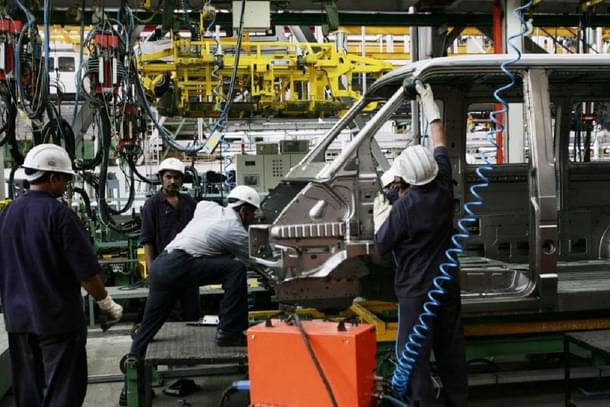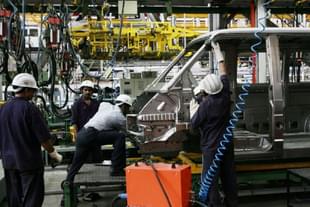News Brief
India’s PMI Rises To 57.7 In January As Exports Hit 14-Year High And Job Expansion Reaches Fastest Pace In Two Decades
Vansh Gupta
Feb 03, 2025, 05:26 PM | Updated 05:26 PM IST
Save & read from anywhere!
Bookmark stories for easy access on any device or the Swarajya app.


India’s manufacturing sector witnessed a sharp resurgence in January, reaching its highest level in six months after experiencing a slowdown in December, as reported by The Hindu.
This revival was fueled by exceptional export performance, marking the strongest month in nearly 14 years, along with factory order books expanding at their fastest pace since mid-2024, according to a private sector survey of over 400 companies.
The HSBC India Manufacturing Purchasing Managers’ Index (PMI) climbed from 56.4 in December to 57.7 in January, breaking a two-month declining trend.
Improved demand conditions played a crucial role in this turnaround, while firms continued adjusting prices, albeit at the slowest rate in four months. A PMI score above 50 signifies growth in business activity.
Even as input cost pressures eased to their lowest levels in 11 months, higher sales volumes and positive growth expectations encouraged companies to expand their workforce at an unprecedented rate.
Data from S&P Global, which compiles the PMI, suggests that hiring in January reached its highest level in almost two decades.
The report also highlighted that production increased at the fastest pace since October 2024, and business confidence strengthened, with nearly 32 per cent of firms forecasting expansion, while only 1 per cent anticipated a contraction.
To keep up with the surge in demand, manufacturers accelerated raw material procurement at the quickest rate in three months. However, finished goods inventories declined for the second consecutive month due to “a mismatch” in demand expansion and production growth.
The depletion of factory stocks was the steepest in nearly three years, though overall capacity pressures remained moderate.
Pranjul Bhandari, chief India economist at HSBC, stated, “Domestic and export demand were both strong, supporting new orders growth. Input cost inflation eased for a second month, relieving pressure on manufacturers to raise final output prices”, quoted as saying by The Hindu.
Vansh Gupta is an Editorial Associate at Swarajya.





